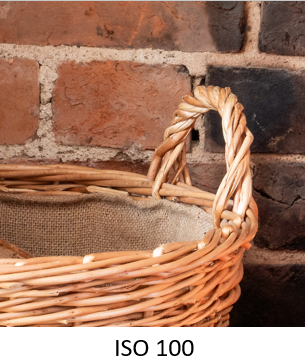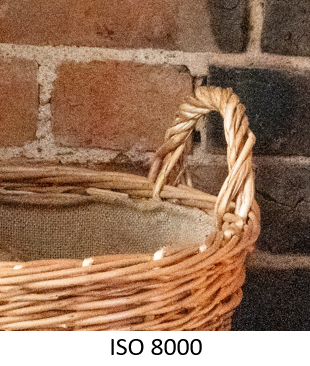What is noise in photography, and how do you prevent it?
- Gary Holpin
- Feb 6
- 4 min read
Updated: Mar 21
In this blog we are looking at what noise is in photography, what causes it, and most importantly, the steps you can take to prevent it.
What is noise?
The term 'noise' in photography refers to random variations of brightness or color in an image, often appearing as grainy specks, especially in areas of uniform color or darkness. It can significantly degrade image quality, reducing sharpness and detail, and is therefore normally something to be avoided. Noise is often most noticeable in shadows and darker areas of an image but can appear across the entire frame.
The photo below was taking using Pro mode on my mobile phone - I used a high ISO (of 3200) and deliberately underexposed the image. I then increased the brightness in post-processing, revealing graininess (noise) all across the image, but especially in the shadows.

Why noise happens
There are a number of potential causes of noise in images:
1. High ISO: Increasing ISO amplifies the signal from the sensor, which makes the image brighter, but it also amplifies the inherent electrical noise.
2. Small Sensor: Smaller sensors (e.g. in smartphones) typically produce more noise due to their smaller pixel size, which gathers less light.
3. Low Light Conditions: In poor lighting, sensors struggle to gather enough light, leading to a lower signal-to-noise ratio.
4. Long Exposures: The longer the exposure, the more heat is generated in the sensor, which can create "thermal noise."
5. Post-Processing: Over-editing, such as aggressive shadow recovery or excessive sharpening, can amplify noise.
6. Camera Heat: During extended shooting or long exposures, the sensor can heat up, introducing noise.
In the image set below, the left hand image has been taken using a low ISO setting, and the right hand image using a high ISO setting. The right hand image clearly displays much more in the way of noise.
How to minimise noise
As you can see above, there are a number of potential causes of noise, and it's impossible to avoid them all. However the following strategies can significantly reduce the likelihood of noisy images:
Use the lowest ISO Setting You Can: Shoot with the lowest ISO your scene allows. As long as there is nothing in the scene that is moving, you can increase shutter speed, or open your aperture instead (assuming you are shooting in Manual mode).
Expose Properly: Underexposed images amplified in post-processing will reveal more noise. It's usually better to slightly over-expose than underexpose (although be careful of clipping highlights such as bright parts of the sky. See this blog on 'exposing to the right' and this blog on how to nail the perfect exposure. If your scene has a high dynamic range (a wide range of brightness, such as in a sunrise scene) then it is always better to bracket as this will ensure that you have frames which have well exposed shadows with a reduced noise signal. See this blog on how to bracket.
Shoot RAW: RAW files retain more data, especially in shadows, and will allow you to recover detail with less noise than if you shoot in Jpeg. See this blog on RAW versus Jpeg.
Let Your Camera Cool Between Shots: Let your camera rest between long-exposure shots to reduce thermal noise.
Use your camera's in-built noise reduction: Many cameras have an option to reduce noise when taking long exposures ('long exposure noise reduction'). Although this can be effective on long exposures, it does require your camera to take a second image to use in the noise reduction process, so will double the exposure time.
Use Noise Reduction Software: If all else fails, it's possible to use programs like Adobe Lightroom or Topaz DeNoise to reduce noise in your image. With the addition of AI, these packages now offer very effective noise reduction capabilities.
Want to improve your photography skills?
Don't forget that if you want some direct help with your photography, I offer a range of 1-2-1 photography courses for Devon based folks. If you're not nearby then I also offer residential workshops for beginner photographers or improving photographers.
About me
As a professional photographer based in Devon, my journey began along the stunning South West Coast Path. Disappointed with my initial attempts to capture its beauty, I embarked on a second 630-mile journey, this time dedicated to mastering photography. Today, I'm a nationally acclaimed photographer with award-winning landscape photos.
I specialize in providing top-notch property photography, business photography, and drone photography services to businesses across the South West. Additionally, I offer comprehensive photography training courses tailored for both businesses and individuals. Whether you're looking to enhance your corporate image or improve your personal photography skills, my training programs are designed to help you capture stunning images.
As an award-winning and widely published photographer, I frequently share my passion for photography and Devon through engaging talks at local camera clubs and community groups. My expertise spans the entire South West region, ensuring that clients from Devon, Dorset & Somerset benefit from high-quality photography services and training.












